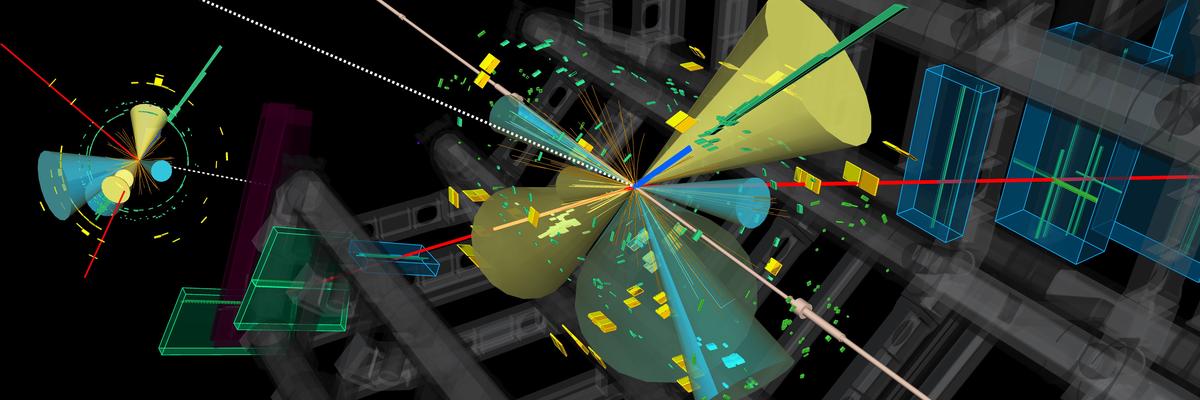Highlight
ATLAS and CMS observe simultaneous production of four top quarks
March 28, 2023
- The ATLAS and CMS collaborations have observed the simultaneous production of four top quarks, the heaviest elementary particle, in collisions at the world’s largest particle accelerator, located at CERN.
- The Institut de Física d’Altes Energies (IFAE) plays a prominent role in the observation of this rare phenomenon that could be key to searching for new particles beyond the Standard Model.

The international scientific collaborations operating the ATLAS and CMS experiments at CERN have just announced, after four years of data collection and five of analysis, the first observation of the simultaneous production of four top quarks. The top quark is the most massive elementary particle known, so it requires a lot of energy to produce. CERN’s Large Hadron Collider (LHC), the largest and most powerful particle accelerator in the world, is the only one capable of producing four top quarks at the same time, one of the rarest processes that their experiments have observed to date. The Institut de Física d’Altes Energies (IFAE) participates in the discovery.
The ATLAS Collaboration, one of the two large LHC experiments involving more than 5,000 scientists and technicians from around the world, had found indications of the simultaneous production of four top quarks in data obtained between 2015 and 2018 (Run 2). Now, the ATLAS science team has revised the search, taking advantage of improvements in detector performance, new analysis techniques (including machine learning called the Graph Neural Network), and a better understanding of the main background processes. All this means that the result, presented last week at the Moriond conference, reaches six sigmas of statistical confidence, confirming the finding.
Spanish participation
The ATLAS group of the Institut de Física d’Altes Energies (IFAE) has been involved in studies of the production of four top quarks since 2018. Over the years, the group has led searches for this process as predicted by the Standard Model, as well as through exotic particles present in theories beyond the Standard Model. These contributions led to the first evidence of the production of four top quarks by the ATLAS collaboration, which was announced in July 2020. Since then, the IFAE group has continued to contribute to this effort, and is currently leading the analysis in the decay channel with exactly one lepton (electron or muon) or two oppositely charged leptons. Regarding the result announced today, the researcher Aurelio Juste (IFAE/ICREA), current co-leader of the IFAE group in ATLAS, has been the chair of the ATLAS editorial board that has reviewed and eventually approved the analysis and its publication.
The research group of the Institute of Corpuscular Physics (IFIC, CSIC-UV) has also participated in the discovery. Marcel Vos, a CSIC researcher at the IFIC, is the coordinator of the top physics group of the ATLAS experiment.
Excitement for the find in the particle physics scientific community stems from the spectacular final state composed of 4 top quarks, as well as the opportunity it opens up to search for signs of physics beyond the Standard Model. In particular, the fact that the observation shows a slight excess in the rate of top quark production compared to the Standard Model prediction makes the result all the more intriguing.
Relation to the Higgs boson
The top quark is the heaviest particle in the Standard Model, which means it is the particle with the strongest ties to the Higgs boson. During this investigation, the team has also searched for signs of new physical phenomena in relation to the Higgs boson. This new analysis has led them to limit the interaction between the top quark and the Higgs boson, setting a limit of 1.8 times the prediction of the Standard Model.
The ATLAS Collaboration will continue to push the precision of this measurement during Run 3 of the LHC, which is ongoing since 2022. Future studies will provide additional information about the observed signal, helping to determine whether it truly matches the Standard Model or whether there is hints of new physical phenomena that lead to a deeper understanding of the fundamental nature of the universe.
- IFAE Research group
- Collider Physics Group
- Contact
